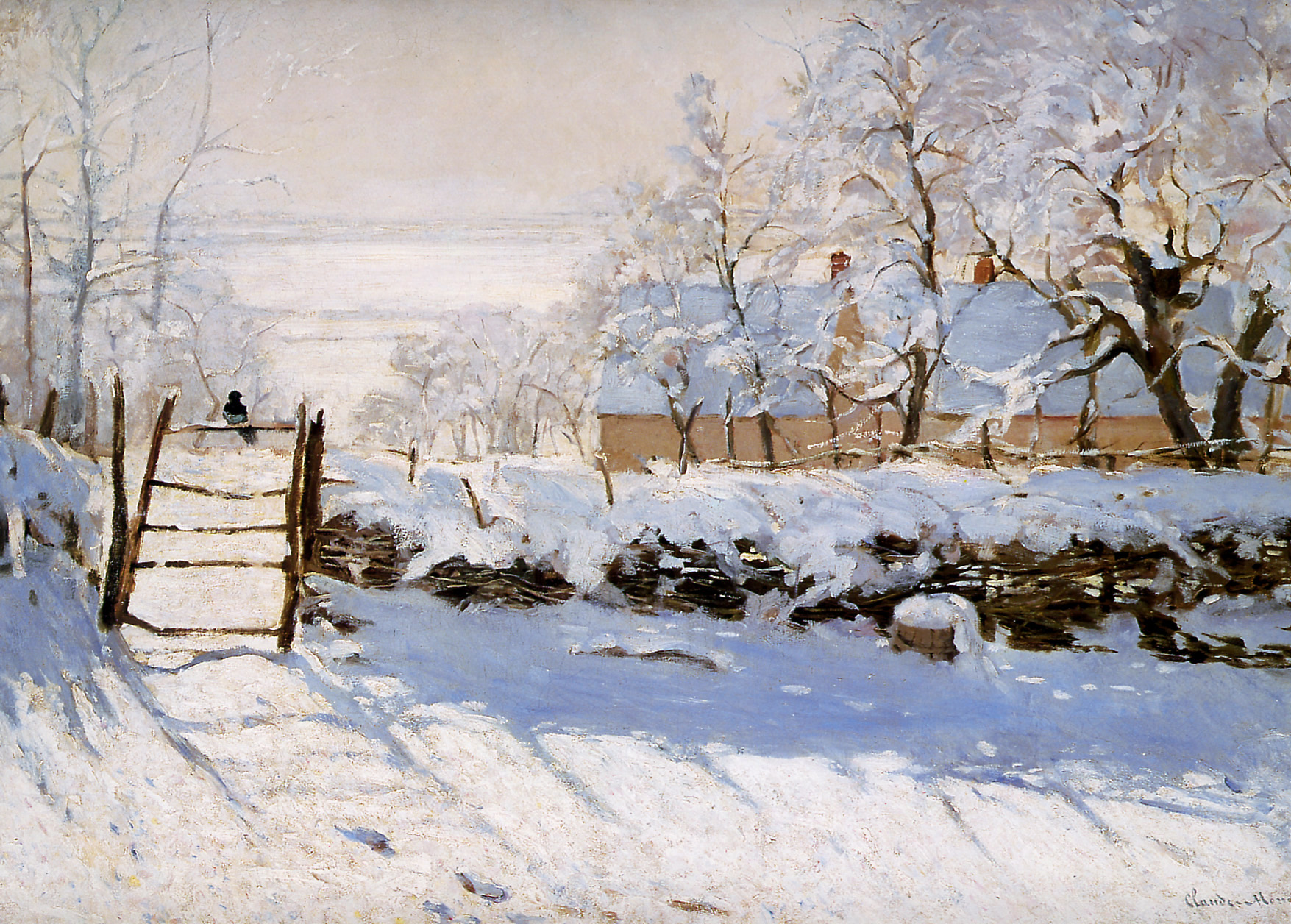Клод Моне - Сорока 1869
 |
 |
 |
 |
 |
 |
 |

Сорока 1869
130x96см холст/масло
Musée d'Orsay, Paris, France
The image is only being used for informational and educational purposes
<< Previous G a l l e r y Next >>
From the Musée d'Orsay, Paris, France:
In the late 1860s, Monet started to extend the need to capture sensations and render "the effect" to all transitory, even fleeting states of nature. Taking Pissarro, Renoir and Sisley with him, Monet tackled the great challenge of a snow-covered landscape, which Courbet had grandly explored with great success not long before. Toning down Courbet's lyricism, Monet preferred a frail magpie perched on a gate, like a note on a staff of music, to the world of the forest and hunting. Sun and shade construct the painting and translate the impalpable part-solid part-liquid matter. The Impressionist landscape was born, five years before the first official exhibition when the movement was given its name.
This painting of a place in the countryside near Etretat, executed on the spot, uses very unusual pale, luminous colours, a fact highlighted by the critic Felix Fénéon: "[The public] accustomed to the tarry sauces cooked up by the chefs of art schools and academies, was flabbergasted by this pale painting." The novelty and daring of Monet's approach, which was more about perception than description, explain the painting's rejection by the jury of the 1869 salon.